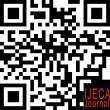Investigating Test Equating Methods: English Examination Test
Abstract
Keywords
Full Text:
DOWNLOAD [PDF]References
AM, M. A., & Retnawati, H. (2023). Equating of standardized science subjects tests using various methods: which is the most profitable? Thabiea : Journal of Natural Science Teaching, 6(1), 51. https://doi.org/10.21043/thabiea.v6i1.19503
Argianti, A., & Retnawati, H. (2020). Characteristics of Math national-standardized school exam test items in junior high school: What must be considered? Jurnal Penelitian Dan Evaluasi Pendidikan, 24(2), 156–165. https://doi.org/10.21831/pep.v24i2.32547
Aşiret, S., & Sünbül, S. Ö. (2016). Investigating test equating methods in small samples through various factors. Kuram ve Uygulamada Egitim Bilimleri, 16(2), 647–668. https://doi.org/10.12738/estp.2016.2.2762
Depdiknas. (2003). Sistem Penilaian Kelas SD, SMP,SMA dan SMK. 93–115.
Elvira, M., & Sainuddin, S. (2021). Equating Test Instruments Using Anchor to Map Student Abilities Through the R Program Analysis. Proceedings of the International Conference on Engineering, Technology and Social Science (ICONETOS 2020), 529(Iconetos 2020), 651–657. https://doi.org/10.2991/assehr.k.210421.095
Fong, C. Z., & Chuen, T. Y. (2023). Test Score Equating and Item Anchoring for High Stakes Examination Test Score Equating and Item Anchoring for High Stakes Examination. University of Malaya, 18(March), 1–11. https://doi.org/10.15625/2615-8957/22210401
Heri Retnawati. (2016). www.nuhamedika.gu.ma
Kurniawati, S., & Sundawa, D. (2019). An Analysis of National Standard School Examination Items Based on the Characteristics of Hots (Higher Order Thinking Skills) Questions for the Main Items of K13-071 Academic Year 2016/2017 in Karawang Regency. International Journal Pedagogy of Social Studies, 3(2), 100–112. https://doi.org/10.17509/ijposs.v3i2.15793
Muhson, A., Lestari, B., Supriyanto, S., & Baroroh, K. (2017). The development of practical item analysis program for indonesian teachers. International Journal of Instruction, 10(2), 199–210. https://doi.org/10.12973/iji.2017.10213a
Mutluer, C. (2017). European Journal of Education Studies (Academic Personnel And Postgraduate Education Entrance Exam) Scores Obtained At Different Times In A Year i. 96–120. https://doi.org/10.5281/zenodo.1101229
Nisa, C., & Retnawati, H. (2018). Comparing the methods of vertical equating for the math learning achievement tests for junior high school students. REID (Research and Evaluation in Education), 4(2), 164–174. https://doi.org/10.21831/reid.v4i2.19291
Prasetyo, O., & Pratomo, A. R. (2021). Evaluasi Penghapusan Ujian Sekolah Berstandar Nasional (USBN). Edukatif : Jurnal Ilmu Pendidikan, 3(6), 4102–4107. https://doi.org/10.31004/edukatif.v3i6.1281
Rizki Nor Amelia, F. A. S. (2016). Aplikasi Model Penskoran Equal Weighting Dan Differential Weighting Untuk Mengestimasi Skor Kimia Siswa. Jurnal Evaluasi Pendidikan, 4(1), 80–89. http://journal.student.uny.ac.id/ojs/index.php/jep%0AAPLIKASI
Rosidin, U., Herpratiwi, Suana, W., & Firdaos, R. (2019). Evaluation of national examination (UN) and national-based school examination (USBN) in Indonesia. European Journal of Educational Research, 8(3), 827–837. https://doi.org/10.12973/eu-jer.8.3.827
Sainuddin, S. (2018). Analisis Karakteristik Butir Tes Matematika Berdasarkan Teori Modern (Teori Respon Butir). Jurnal Penelitian Matematika Dan Pendidikan Matematika, 1(1), 1–12.
Tanjungpura, U. (2015). Prosiding SEMIRATA 2015 bidang MIPA BKS-PTN Barat Universitas Tanjungpura, Pontianak Hal. 171 - 179. 171–179.
Uysal, İ., & Doğan, N. (2021). Automated Essay Scoring Effect on Test Equating Errors in Mixed-format Test. International Journal of Assessment Tools in Education, 8(2), 222–238. https://doi.org/10.21449/ijate.815961
Wasidi, W., & Widiyati, E. (2022). Pelatihan Penyetaraan Skor Hasil Ujian di SMP IT Khairunnas Bengkulu. Dharma Raflesia : Jurnal Ilmiah Pengembangan Dan Penerapan IPTEKS, 20(2), 262–270. https://doi.org/10.33369/dr.v20i2.21105
Yılmaz, Ö. (2023). Adaptation of the Job Stress Scale into Turkish. International Journal of Contemporary Educational Research, 10(2), 535–543. https://doi.org/10.52380/ijcer.2023.10.2.444
Yusron, E., Retnawati, H., & Rafi, I. (2020). Bagaimana hasil penyetaraan paket tes USBN pada mata pelajaran matematika dengan teori respon butir? Jurnal Riset Pendidikan Matematika, 7(1), 1–12. https://doi.org/10.21831/jrpm.v7i1.31221
DOI: https://doi.org/10.31764/ijeca.v7i3.25065
Refbacks
Copyright (c) 2024 Rezkilaturahmi, Rahmat Danni, Heri Retnawati

This work is licensed under a Creative Commons Attribution-ShareAlike 4.0 International License.
IJECA (International Journal of Education and Curriculum Application) already indexed:










___________________________________________________________________
| |
____________________________________________________________________
IJECA Publisher Office:







.jpg)




